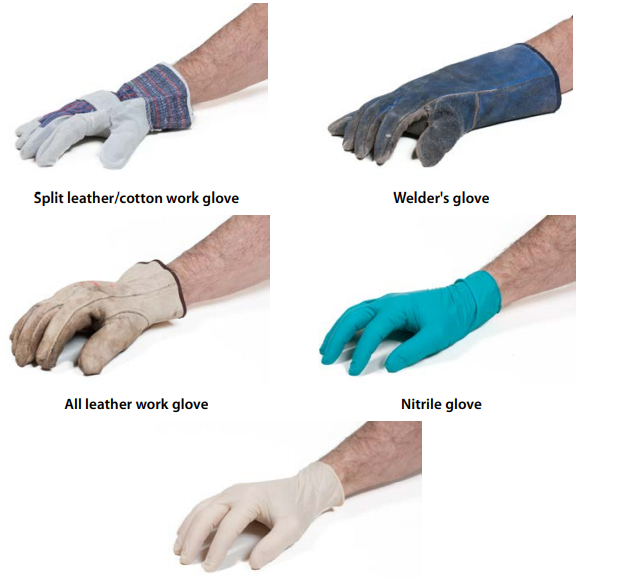LEARNING TASK 1 : Describe safety gear and work clothing
Hand and skin protection
WorkSafeBC accident statistics indicate that over 30 percent of work injuries involve fingers, hands, and arms. Many of these accidents could be avoided by using appropriate hand protection. As a trades worker, you are ultimately responsible for ensuring that you use the correct hand protection for each hazardous situation.
Gloves
Gloves are manufactured from materials such as cotton, leather, rubber, metal, and other synthetics and are tailored to meet every need for hand protection in every trade area:
- Leather or vinyl-coated gloves should be used when handling lumber or steel.
- Gauntlet-type welder’s gloves should be used when welding or flame cutting.
- Special heat-resistant gloves should be used when handling hot metal.
- Rubber or approved plastic-treated gloves should be used when handling acids and cleaning solutions.

Barrier creams
If you are exposed to chemicals that can strip oils from your skin, you are susceptible to developing dermatitis. Avoid this condition by using proper gloves along with a barrier cream if you notice your skin drying out.

